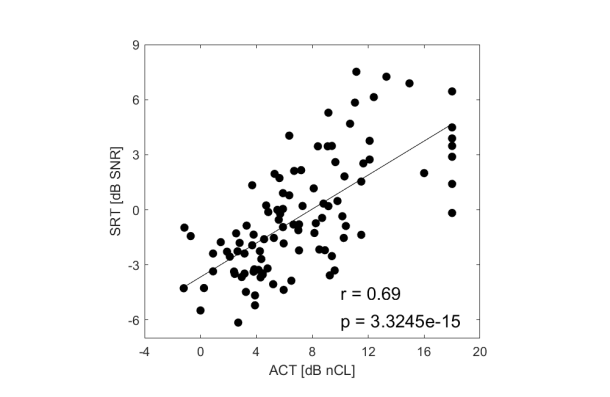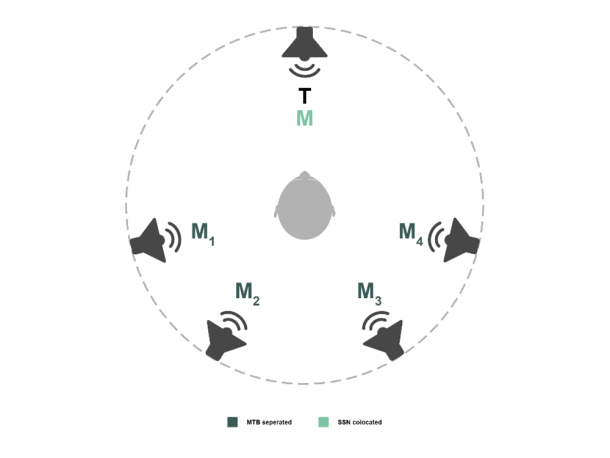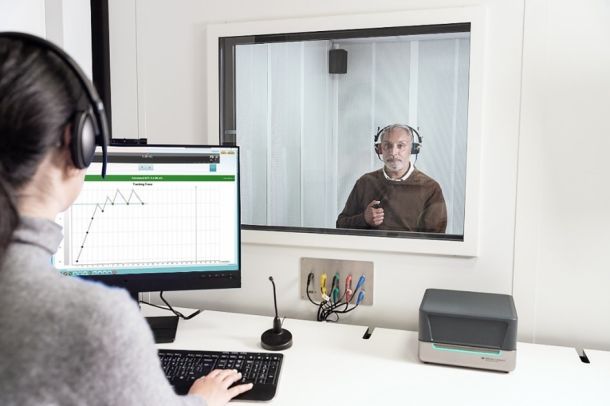Research made into hearing care
For more than 100 years, we have been fitting hearing aids based on the pure tone audiogram. But there is more to hearing than just being able to hear soft sounds. With the Audible Contrast Threshold (ACT™) test, we are finally ready to go beyond the audiogram and address the number one challenge for people with hearing loss: Hearing speech in noisy environments.
2013-2016
The research begins – spectro-temporal modulation (STM) detection can predict speech-in-noise performance
The research related to ACT took off in the early 2010s when research showed strong correlations between measures of spectro-temporal modulation (STM) detection and speech-in-noise measures.

This was a breakthrough after several decades looking for a simple diagnostic test to predict speech-in-noise performance. However, when this early version of ACT was trialed in a clinical population in Sweden, it was found that one third of participants could not complete the test – it was too difficult for them.
That’s why Interacoustics decided to embark on this research journey and involved their own Interacoustics Research Unit and other partners. This yielded seven years of research to release the full potential of the STM test, eventually leading to ACT.
2016-2017
Test modifications needed
The first step towards a valid diagnostic ACT test is taken, as research at IRU solves the ‘ceiling effect’ mentioned above, that is, the fact that one third of participants in the Swedish clinical trial could not complete the original STM test. Several modifications to the test were introduced to make the test easier. One important contribution was introducing ear and frequency-specific compensation for the hearing loss, based on the individual pure-tone audiogram. In this way, we ensure full audibility of the ACT stimulus throughout the frequency range of stimulation.
With the combined effect of the test modifications, all test subjects in the study were able to produce proper thresholds, and we also found that the strong relationship between the early ACT and speech-in-noise performance was intact. Finally, we extended the speech-in-noise testing with a more ’ecologically valid' test set-up, which further strengthened the ACT versus speech-in-noise relationship.
2017-2019
Research study with 30 hearing-aid users
The next study performed at IRU was an experiment in Denmark where 30 hearing-aid users were tested with the early version of ACT as well as an ecologically valid speech-in-noise test. The results once again confirmed the strong relationship between ACT and speech-in-noise performance.
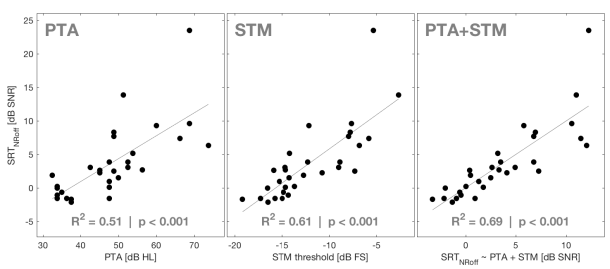
Then, the test subjects were sent out in the field to try two settings of the hearing aids’ help-in-noise features. This was the first investigation of how ACT might be used in hearing-aid fitting. The results suggested that “a clinical test that assesses STM detection sensitivity [ACT] may be useful for prescribing noise reduction settings in hearing aid fitting.”
2019-2021
From research tool to a valid diagnostic test
In a final series of investigations at the Interacoustics Research Unit, the early ACT research tool was converted into the clinical version of the ACT test: The first language-independent, diagnostic test that measures speech-in-noise abilities.
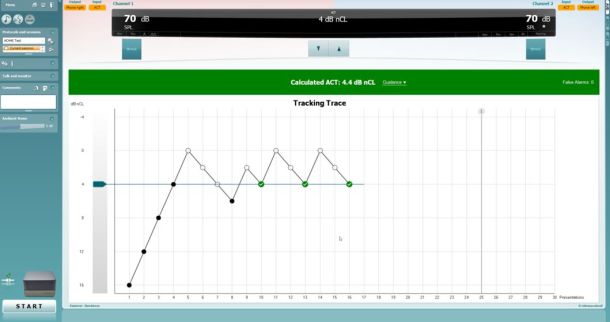
2021-2023
The key clinical results – studies in Japan and Germany
Studies carried out in Germany and Japan add new populations with different native languages – German and Japanese. These studies show once again that ACT is correlated with results from aided ecologically valid speech-in-noise tests, even in diverse clinical populations of hearing-aid users with different native languages.
